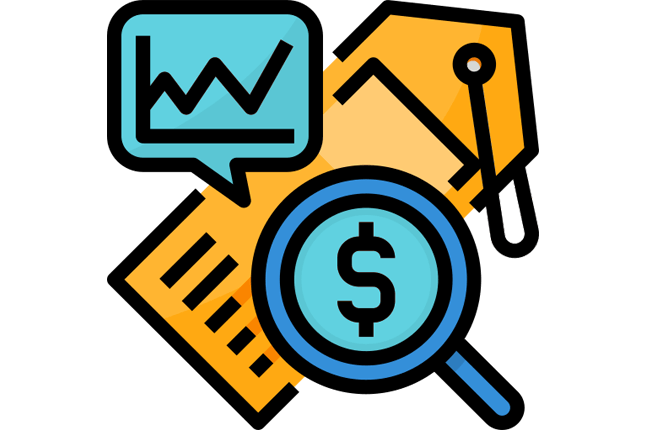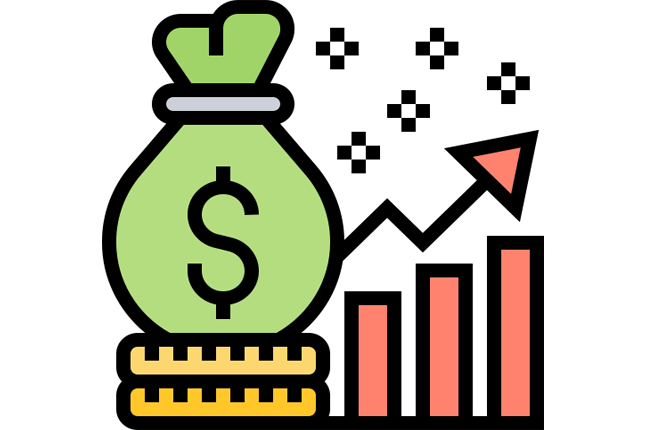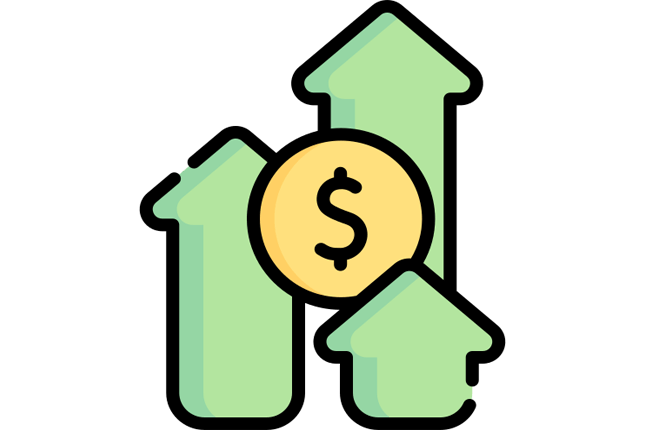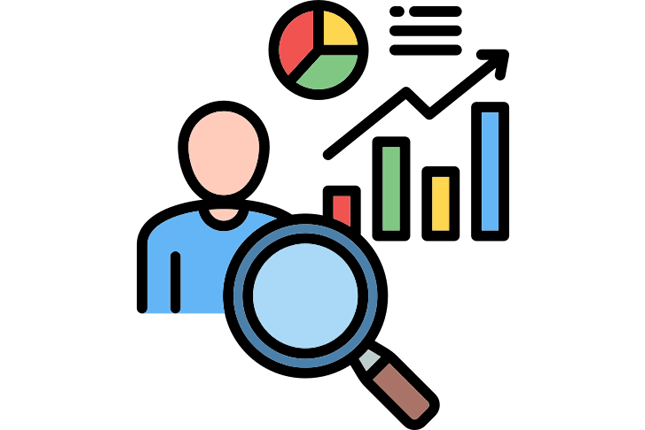Key Concepts in Economics
Economics Fundamentals – Key Concepts You Need to Know
Economics stands at the center of everyday life, influencing individual purchase decisions, business strategies, and government policies. At its core, it is the study of how societies utilize limited resources to meet various needs. From determining the equilibrium price of smartphones to analyzing why certain nations enjoy robust growth, the principles of economics bring order and clarity to a complex world. Below is an expanded discussion of fundamental topics every learner should grasp, complete with real-world applications and a spotlight on why these ideas remain so relevant.

Supply and Demand
Supply and demand operate as the core mechanics of any market-driven economy. When demand for a product rises, prices tend to increase, prompting producers to ramp up output in search of profit opportunities. If supply then surpasses demand, prices commonly drop until a new balance is found. This self-regulating phenomenon emerges across diverse industries, whether consumers are purchasing everyday groceries or investing in high-end electronics.
Traces of supply and demand appear in nearly all commercial settings. Retailers anticipate higher demand for gifts during holiday seasons, spurring them to stock more inventory and potentially raise prices. Tech manufacturers gauge market appetite for new gadget models to time product launches that avoid surplus or shortage. For governments, understanding supply and demand helps craft policies aimed at stabilizing prices or ensuring critical goods remain accessible, such as regulating the cost of essential medicines.
Elasticity and Consumer Responses
Not every product’s demand fluctuates in the same manner when prices shift. Elasticity measures how consumers react to changes in cost. In scenarios where demand is highly elastic, a modest price hike can sharply reduce purchases, especially for non-essential or luxury goods. In markets with inelastic demand, such as basic groceries or medication, price alterations yield smaller effects on consumption. Identifying elasticity levels helps businesses set price points that maximize revenue without alienating buyers.
Governments likewise apply elasticity principles to assess the outcomes of taxes on particular products. Taxes placed on items with inelastic demand—like tobacco or fuel—may generate substantial revenue but can also weigh disproportionately on certain consumers. Conversely, applying taxes to highly elastic goods often results in decreased demand, limiting revenue and shifting consumer behavior. These insights underscore why elasticity remains a pivotal tool for policy design and corporate strategy.
Opportunity Cost and Trade-Offs
All agents—whether individuals, companies, or governments—operate under constraints of time, money, or resources. Opportunity cost captures what must be forfeit by choosing one option over another. A business that invests in a new product line may sacrifice expansions in existing lines, while a student devoting late-night hours to study misses out on relaxation or part-time earnings. Recognizing these inherent trade-offs encourages more judicious decision-making and clarifies how resources can be allocated to produce the greatest net benefit.
Opportunity cost also emerges at the societal level. When public funds are directed toward infrastructure improvements, fewer resources remain for educational initiatives or healthcare upgrades. By analyzing the potential returns of different allocations, policymakers can identify whether certain outlays align with public priorities or if alternate paths might yield stronger outcomes. This balance is essential for fostering economic growth and social well-being.
How Markets Find Equilibrium
Markets naturally tend toward equilibrium, a level where quantity supplied equals quantity demanded at a given price. Retailers fear stockpiling merchandise that remains unsold, so they reduce prices if goods linger on shelves. Shoppers, on the other hand, respond to lower prices by increasing purchases. This interplay tightens until the surplus disappears, leaving supply and demand matched.
In real-world scenarios, market equilibrium rarely sits static. Shifts in consumer preferences, technological disruptions, and international trade patterns continually redefine equilibrium positions. Officials might intervene via subsidies or price caps when they judge that equilibrium outcomes conflict with broader interests, such as ensuring widespread access to staple foods. While price controls offer short-term relief, they can generate shortages or surpluses if prolonged, highlighting the delicate balance between market freedom and economic intervention.
Monopoly and Oligopoly
While many assume markets function in a state of near-perfect competition, numerous industries display more concentrated structures. A monopoly arises when one enterprise monopolizes production or distribution, often allowing it to set high prices with minimal fear of losing customers. Oligopolies, consisting of a few dominant firms, can likewise restrict competition, sometimes coordinating to keep prices elevated. Both scenarios draw government attention due to the risk of consumer exploitation.
Antitrust laws, such as the Sherman Act in the United States, seek to prevent a single entity from gaining unchecked control. Regulators scrutinize mergers and acquisitions to preserve competitive environments. Meanwhile, smaller, specialized markets might benefit from natural monopolies, where a single provider more efficiently handles local utilities like water supply or electricity grids. Policymakers thus weigh the trade-offs between market freedom and oversight, ensuring consumers reap the benefits of fair pricing and choice.
Gross Domestic Product (GDP)
Gross Domestic Product (GDP) tracks the monetary value of all goods and services produced within a country’s borders over a specific period. Analysts use GDP as a quick barometer of economic health: continuous GDP growth suggests rising employment opportunities and higher consumption, whereas GDP stagnation or decline can signal recessions. Businesses monitor GDP trends to plan investments and expansions.
Although GDP is a widely used yardstick, it is not without limitations. It measures output volume but offers little insight into income distribution, environmental sustainability, or quality of life. Some economists champion alternative indices, such as the Human Development Index, to complement GDP, thereby presenting a broader measure of well-being. Nonetheless, for day-to-day policy and corporate decision-making, GDP remains a cornerstone of macroeconomic analysis.
Inflation
Inflation denotes a broad rise in price levels over time, eroding the purchasing capacity of money. During periods of mild inflation, economies can enjoy steady wage growth and robust demand; however, runaway inflation can destabilize markets by creating uncertainty and reducing consumer confidence. Central banks often counter inflationary pressures through tighter monetary policies, including raising benchmark interest rates.
Conversely, very low inflation or deflation—where prices trend downward—carries its own pitfalls. Consumers may delay purchases in anticipation of even lower prices, constraining demand and further deflation. Balancing the two extremes is crucial for maintaining economic momentum. Businesses also need to calibrate wage structures and inventory strategies against forecasted inflation rates, ensuring they can adjust prices or salaries without undermining profitability or competitive positioning.
Unemployment and Economic Well-Being
The unemployment rate represents the portion of the labor force seeking work but unable to find it. High unemployment can indicate sluggish economic performance, while low unemployment typically hints at robust business activity. However, overly tight labor markets can fuel wage spirals, which, if combined with other factors, spur inflation.
Governmental stimulus plans, job training programs, and infrastructure developments often aim to reduce unemployment while upgrading workforce skills. Businesses watch unemployment figures to guide recruiting plans, as an abundant pool of job seekers might reduce wage pressures, whereas labor shortages drive up employee compensation. Policymakers continually search for the equilibrium that keeps workforce levels high yet avoids excessive wage inflation that could hamper global competitiveness.
Fiscal and Monetary Policies
Governments wield fiscal policy—spending and taxation—to influence economic activity. By increasing public expenditures during downturns, authorities can stimulate demand, propping up employment and growth. Conversely, restraining spending or raising taxes can cool an overheated economy at risk of high inflation. Varying tax structures also redistribute wealth, bolstering specific segments of society or industries.
Monetary policy, administered by central banks, adjusts the money supply and sets interest rates to promote stability. When rates decline, borrowing costs drop, prompting businesses to invest and households to spend, stimulating expansion. Conversely, raising rates tempers lending activity, holding inflation in check. Investors, including global fund managers, track monetary announcements from institutions like the Federal Reserve in the United States, as such decisions can have ripple effects across credit markets, foreign exchange rates, and international investment flows.
The Influence of Interest Rates
Interest rates act as a lever that central banks and financial markets use to guide economic direction. Reduced rates tempt businesses to finance expansions or research projects, while consumers might purchase homes or cars at lower monthly payments. However, if interest rates climb, businesses quickly reconsider capital-intensive plans and consumers might postpone big-ticket items. Thus, interest rates impact the velocity of money flow throughout the economy.
Governments also shoulder responsibilities when interest rates shift. Heightened rates enlarge the expense of public debt servicing, which can crowd out other budget priorities. Currency exchange rates are similarly shaped by interest differentials: if one country’s rates are significantly higher than another’s, global investors may shift funds into that currency, appreciating its value. Firms in export-driven sectors must track these shifts, as stronger domestic currencies can hamper competitiveness abroad.
Trade and Tariffs
Trade refers to the exchange of goods and services between countries, and tariffs are taxes imposed on imports. International trade allows countries to specialize in producing goods and services where they have a comparative advantage, leading to more efficient global markets. However, governments sometimes impose tariffs to protect domestic industries from foreign competition or to retaliate against other countries’ trade practices.
For businesses, understanding trade and tariffs is essential for making informed decisions about international expansion, sourcing materials, or exporting products. Tariffs can increase the cost of imported goods, potentially reducing profit margins or raising prices for consumers. Conversely, free trade agreements between countries can lower trade barriers, opening up new markets for businesses.
Exchange Rates
Exchange rates represent the value of one currency relative to another. They affect international trade, travel, and investments. A country’s exchange rate can be influenced by factors such as inflation, interest rates, and political stability. Businesses that operate internationally must monitor exchange rates to manage the costs of buying and selling goods in foreign currencies.
For example, if a U.S. company exports products to Europe, it will be paid in euros. If the value of the euro falls relative to the U.S. dollar, the company will receive fewer dollars for the same amount of goods sold, potentially reducing profits. On the other hand, a favorable exchange rate can increase profits from international sales. Understanding exchange rates is crucial for businesses engaged in global trade, and governments also monitor exchange rates as part of their broader economic policy.
Comparative Advantage
Comparative advantage is the concept that countries should specialize in producing goods and services where they have a relative efficiency advantage. This principle is the foundation of international trade. By specializing in what they do best, countries can trade with others to obtain goods they are less efficient at producing, leading to a more efficient global allocation of resources.
For example, if a country is highly efficient at producing agricultural products but less so at manufacturing cars, it makes sense for that country to export food and import cars. Businesses operating in international markets use the idea of comparative advantage to decide where to locate production facilities or source materials. This principle underpins the rationale for globalization and trade agreements between nations.
Externalities and Public Goods
Certain transactions generate spillover effects that extend beyond direct buyers and sellers. Pollution from factories imposes costs on communities, exemplifying a negative externality, whereas well-maintained city parks or open-source software can confer benefits that others enjoy without directly paying, a form of positive externality. Economists see externalities as prime justifications for government regulations or incentives—taxing pollution or subsidizing green technology, for instance—to align private actions with broader societal welfare.
Public goods, another distinct category, benefit everyone regardless of individual contributions. Examples range from national defense to street lighting. Because markets have limited reason to provide resources that users can consume freely, governments usually assume responsibility for funding and distributing public goods. Striking a healthy balance between private entrepreneurship and robust public provisions ensures communities can flourish in realms like healthcare, education, and infrastructure.
Market Failures and Government Intervention
Though markets coordinate countless transactions effectively, certain conditions produce market failures. Monopolistic firms might exploit pricing power, externalities can drive social costs unaddressed by private enterprise, or insufficient competition might hinder innovation. In these cases, public authorities consider regulations, taxation, or subsidies to rectify inefficiencies.
As an example, governments may cap rental prices to maintain affordable housing, or they might require companies to meet specific environmental standards. Such interventions, however, must be designed carefully to avoid unintended side effects. Overly rigid rent controls can disincentivize property development, while high environmental fees might relocate industries offshore. Thus, policy success depends on nuanced application of economic theory in tandem with an awareness of social and political realities.
Marginal Utility, Diminishing Returns, and Consumer Choices
Marginal utility captures the incremental satisfaction a buyer experiences upon consuming an additional unit of a good or service. Usually, the first purchase of an item such as a chocolate bar or smartphone accessory delivers more gratification than subsequent repeats, a concept referred to as diminishing marginal utility. This logic clarifies why consumers sometimes purchase single expensive brand-name items but hesitate to buy multiples.
Diminishing returns shape the logic of labor and production too. Hiring more employees can boost output up to a point, but crowding the workplace might later reduce efficiency as coordination challenges mount. Wise resource allocation thus involves identifying the margin where each additional worker or machine continues to produce a net benefit. Both businesses and households rely on these principles to plan expansions, set product quantities, and satisfy consumer needs without excess waste.
Cost-Benefit Analysis in Action
Decision-makers frequently employ cost-benefit analysis (CBA) to gauge the pros and cons of prospective projects. By assigning monetary values to both direct expenditures and intangible gains, a clearer picture emerges of whether the benefits justify the outlays. Corporations might use CBA to decide if retooling a factory line aligns with expected demand, whereas governments apply it when evaluating infrastructure investments like new roadways or green energy initiatives.
Assigning a monetary figure to benefits such as pollution reduction or cultural enrichment can be tricky, yet CBA emphasizes transparency, encouraging stakeholders to voice differing views on project worthiness. It also fosters accountability, as policy proposals backed by rigorous cost-benefit assessments can be refined or abandoned if projected costs exceed plausible returns.
Budget Deficits and Surpluses
Government budgets, much like household or business budgets, are influenced by the difference between revenues and expenditures. A budget deficit occurs when a government spends more than it collects in revenue, while a budget surplus occurs when revenues exceed expenditures. These fiscal conditions can influence economic policy and the overall health of an economy.
Governments facing deficits may borrow money to cover the shortfall, increasing national debt. Persistent deficits can lead to long-term challenges, such as rising interest payments on the debt, which divert resources away from other public services. On the other hand, surpluses provide governments with additional funds to invest in infrastructure, education, or healthcare, potentially boosting long-term economic growth.
For businesses, understanding the implications of government deficits and surpluses can provide valuable insight into future tax policies, public spending priorities, and the overall direction of the economy. A government dealing with large deficits may cut spending or raise taxes, affecting everything from public infrastructure projects to consumer purchasing power. Conversely, surplus-driven policies might stimulate economic activity by increasing public investment or reducing taxes.
National Debt
National debt represents the total amount a government owes to creditors. It is the accumulation of past deficits that were financed by borrowing. While national debt is a regular feature of modern economies, the level of debt relative to a country’s GDP is a key measure of economic sustainability. Excessive national debt can lead to higher interest rates and reduced investor confidence, which can negatively impact economic growth.
On the other hand, when managed effectively, national debt can be used to fund essential public investments, such as infrastructure and education, that contribute to long-term economic growth. Businesses and financial markets closely monitor national debt levels, as rising debt can affect interest rates, inflation, and exchange rates, influencing investment decisions and overall market stability.
Countries with high debt may face increased borrowing costs, which could ripple through the economy by making business loans more expensive and reducing overall consumer spending. On the other hand, countries that manage debt effectively tend to have more stable financial environments, which can be more conducive to business growth and investment.
Labor Markets and Workforce Dynamics
Labor markets link employers seeking qualified applicants with workers looking for job opportunities. Fluctuations in demand for certain skill sets, combined with broader economic conditions, set wage levels and job availability. Low unemployment rates may drive up salaries, benefiting employees but possibly straining company budgets. High unemployment signals weak economic momentum, often prompting stimulus measures or job retraining programs.
Technological shifts also reshape labor markets. Automation expands output yet displaces specific roles, creating mismatches between existing skills and new job openings. Governments partner with educational institutions to foster workforce adaptability, integrating emerging fields like data analytics or green energy. Companies that accurately forecast labor trends can gain an edge by recruiting and training staff ahead of skill shortages, thereby boosting efficiency and resilience.
Productivity and Long-Term Growth
Productivity, defined as the amount of output derived from given inputs, underpins rising living standards and sustained development. When businesses adopt advanced machinery or apply innovative management techniques, each worker’s contribution can increase substantially. Economies that continuously elevate productivity can fund better infrastructure, widen social programs, and offer higher wages without fueling inflation.
Countries achieve productivity gains by promoting research and development, education, and stable governance. On the corporate side, leaders invest in technology, skill training, and continuous process improvements. While breakthroughs in automation or artificial intelligence often spark fears of job displacement, they can also spur growth in sectors that remain largely unaffected by machines, thus creating new opportunities elsewhere.
Globalization and the Digital Age
Globalization intensifies economic linkages across nations, facilitated by rapid shipping, communication tools, and trade accords. Corporations manufacture products in one region, design them in another, and market them worldwide. This global web promises efficiency but can also trigger regional job losses if production shifts to locations with cheaper labor. Policymakers must carefully balance the benefits of open trade against potential negative consequences for specific communities or industries.
The digital revolution further magnifies globalization. Online platforms transcend borders, letting small businesses export internationally and enabling startups to find global audiences overnight. Yet concerns about data privacy, cyber threats, and technology monopolies continue to rise, compelling governments to define new regulatory frameworks that can handle the fast-evolving nature of digital commerce. For businesses, understanding these shifting landscapes is key to harnessing global opportunities and anticipating new forms of competition.
Corporate Taxation
Corporate taxation is a key element in business decision-making and national economic strategies. Taxes imposed on business profits can influence a company’s ability to expand, hire employees, or invest in new projects. Corporate tax rates vary widely from country to country, which is why multinational corporations often seek to establish operations in countries with lower tax rates to maximize profitability.
Corporate taxation also plays a significant role in the broader economy. Governments rely on corporate taxes as a significant source of revenue, which is used to fund public goods and services such as infrastructure, education, and healthcare. However, high corporate taxes can discourage investment and lead companies to relocate their operations to more tax-friendly environments.
Tax incentives are another aspect of corporate taxation that influences business decisions. Governments may offer tax breaks or credits to encourage businesses to invest in certain industries, such as renewable energy or technology development. Understanding corporate taxation allows businesses to navigate the financial landscape efficiently and ensures compliance with regulatory obligations while maximizing profitability.
Privatization
Privatization refers to the process of transferring ownership of public sector enterprises to the private sector. Governments may choose to privatize state-owned companies in order to increase efficiency, reduce public sector debt, or boost competition. By placing formerly state-controlled entities into the hands of private investors, the hope is that market forces will drive innovation and improve service delivery.
For example, industries such as telecommunications, energy, and transportation have seen significant privatization efforts in many countries. In the real world, privatization can have both positive and negative outcomes. On the positive side, privatized companies often become more efficient, providing better services to consumers at lower prices. However, privatization can also lead to job losses or reduced access to essential services if profit becomes the sole focus.
For businesses, privatization offers opportunities for investment and growth in previously restricted markets. By purchasing formerly state-owned assets or entering newly competitive industries, companies can expand their operations. At the same time, governments must carefully manage privatization efforts to ensure that public interests, such as access to affordable utilities or healthcare, are protected.
Subsidies
Subsidies are financial incentives provided by governments to businesses or industries to encourage production, reduce costs, or promote public goods. Governments often use subsidies to support key sectors such as agriculture, renewable energy, or technology development. By reducing costs for producers, subsidies can lower prices for consumers and ensure a steady supply of essential goods.
In the agricultural sector, for example, subsidies help farmers maintain stable incomes even when market prices fluctuate. In the energy sector, subsidies for renewable energy development have been essential in promoting cleaner technologies and reducing dependence on fossil fuels. While subsidies are designed to promote positive outcomes, they can also lead to market distortions if they encourage inefficiency or protect uncompetitive industries from failure.
For businesses, subsidies can provide a competitive advantage, reducing production costs and enabling lower pricing strategies. However, companies must navigate the complex regulatory environment surrounding subsidies to ensure compliance and take advantage of available opportunities. Governments must balance the need to support certain industries with the risks of over-subsidizing and stifling competition.
Price Controls and Market Distortions
Price controls, be they ceilings or floors, interfere with standard supply-and-demand mechanisms. Setting a ceiling below equilibrium can spawn shortages, as seen when rent caps in booming cities discourage new housing construction, exacerbating scarcity. Conversely, price floors above equilibrium—like minimum wage policies—may raise incomes for some workers but can trigger reduced hiring if costs become unsustainable.
Governments enact price controls to safeguard consumers and vulnerable groups, but negative repercussions might arise if policies ignore fundamental economic signals. Balanced considerations of each market’s nuances, accompanied by complementary measures (like subsidies for low-income renters or job training for displaced workers), can temper undesired side effects and optimize public outcomes.
Game Theory
Game theory is a mathematical approach to understanding strategic interactions between different players—be they businesses, individuals, or nations. The principles of game theory are applied in competitive markets, negotiations, auctions, and even international trade agreements. It allows participants to anticipate the actions of others and adjust their own strategies accordingly to achieve the best possible outcomes.
In business, game theory is often used to model competition between companies. For example, firms competing in an oligopolistic market might use game theory to predict how their competitors will react to changes in pricing, marketing strategies, or product launches. By anticipating these reactions, businesses can make more informed decisions about how to position themselves in the market.
One well-known application of game theory is the “prisoner’s dilemma,” which shows how rational individuals or entities may not cooperate, even if it is in their best interest to do so. This concept is relevant in situations like price wars, where companies might reduce prices to attract customers, knowing that their competitors are likely to do the same, resulting in lower profits for all players.
Understanding game theory allows businesses to navigate competitive environments more effectively and make strategic decisions that optimize long-term success, even in situations where direct collaboration with competitors may not be possible.
Behavioral Economics
Behavioral economics merges psychology with economic theory to better understand how individuals and businesses make decisions. Traditional economic models assume that people are rational and always make decisions in their best interest. However, behavioral economics shows that this isn’t always the case—human behavior is often irrational and influenced by cognitive biases, emotions, and social factors.
In the real world, behavioral economics helps businesses and policymakers design better products, services, and regulations by taking human behavior into account. For instance, companies can use insights from behavioral economics to create pricing strategies that capitalize on consumer psychology. An example of this is “anchoring,” where consumers’ perceptions of a product’s price are influenced by a reference point, such as the original price listed during a sale.
Governments also use behavioral economics to design policies that encourage better decision-making, such as “nudging” individuals toward healthier behaviors or more sustainable consumption patterns. By understanding how people make choices, businesses and governments can develop strategies that align with actual behavior, rather than relying solely on traditional economic models.
Consumer Choice Theory
Consumer choice theory is an essential part of economics that explains how individuals make decisions based on their preferences, income, and the prices of goods and services. This theory assumes that consumers aim to maximize their utility, or satisfaction, within the constraints of their budget. In the real world, businesses use insights from consumer choice theory to design products, pricing strategies, and marketing campaigns that align with consumer preferences.
For instance, by analyzing how consumers respond to changes in price, companies can better anticipate demand for their products. If a company knows that consumers view its product as a necessity with few substitutes, it might have more flexibility in raising prices without losing customers. On the other hand, if a product is considered a luxury or has many alternatives, even a small price increase could significantly reduce demand.
Consumer choice theory also has implications for government policy, particularly in areas like taxation. Policymakers use this theory to predict how taxes on goods like cigarettes or sugary drinks might influence consumer behavior, encouraging healthier choices without directly banning the products. Understanding how consumers make decisions allows businesses to align their offerings with customer needs and policymakers to design regulations that influence behavior effectively.
Capital Markets
Capital markets are the financial markets where businesses and governments raise long-term funds through the issuance of stocks and bonds. These markets play a vital role in the global economy by providing a mechanism for transferring funds from savers and investors to entities that need capital for growth and expansion. Capital markets include both primary markets, where new securities are issued, and secondary markets, where existing securities are traded.
For businesses, access to capital markets allows them to secure the funding necessary for new projects, expansion, or research and development. Whether through issuing equity or debt, companies can raise large sums of money by tapping into global capital markets. Governments also rely on capital markets to finance infrastructure projects, social programs, and other public investments.
In the real world, capital markets are highly dynamic, influenced by factors such as interest rates, investor sentiment, and economic conditions. Businesses must carefully monitor these markets to determine the best times to issue new securities or refinance existing debt. Investors, too, must weigh the risks and potential rewards of participating in capital markets, as the value of stocks and bonds can fluctuate based on economic and geopolitical developments.
Shadow Economy
The shadow economy, often referred to as the informal or underground economy, consists of economic activities that are not regulated or taxed by the government. While the shadow economy is often associated with illegal activities like smuggling or unregistered businesses, it also includes legal work performed without proper documentation, such as unreported labor or under-the-table payments.
In developing countries, the shadow economy can represent a significant portion of economic activity, as many workers and businesses operate outside the formal regulatory framework. Even in developed economies, the shadow economy exists in various forms, from freelance work that goes unreported to informal markets that evade taxation.
While the shadow economy provides income for individuals and businesses that might otherwise struggle to participate in the formal economy, it also presents challenges for governments. The lack of regulation and taxation results in lost revenue, undermining public services and social programs. Additionally, workers in the shadow economy are often denied legal protections such as healthcare, pension benefits, and fair wages.
Understanding the shadow economy is important for policymakers aiming to expand the formal economy and reduce the risks associated with unregulated economic activities. For businesses, particularly those operating in countries with large informal sectors, navigating the shadow economy can present both opportunities and challenges.
Income Distribution and Inequality
Income distribution refers to how a nation’s total income is divided among its population, while inequality measures the degree of disparity in income and wealth distribution. These issues are central to both economics and public policy, as extreme inequality can lead to social unrest, reduced economic growth, and a decline in overall well-being.
In the real world, income inequality is influenced by factors such as education, technological change, globalization, and government policy. In many countries, income inequality has widened over the past few decades, with a growing concentration of wealth among the top earners. This trend has sparked debates about how to create more equitable economic systems and address the social consequences of inequality.
Governments use tools like progressive taxation, social welfare programs, and minimum wage laws to mitigate income inequality and promote fairer distribution of resources. Businesses also play a role by offering competitive wages, promoting workforce diversity, and engaging in corporate social responsibility initiatives.
Understanding income distribution and inequality is essential for both policymakers and businesses. Reducing inequality can lead to a more stable and prosperous society, while businesses that prioritize fair wages and inclusive practices can build stronger reputations and foster long-term success.
Poverty and Economic Development
Poverty is a significant global challenge that affects millions of people worldwide. Economic development, on the other hand, refers to efforts to improve living standards, reduce poverty, and increase economic prosperity in a region or country. While poverty is often concentrated in developing nations, it exists in many forms even in the wealthiest economies.
Economists and policymakers focus on a variety of strategies to reduce poverty, including investing in education, healthcare, infrastructure, and creating opportunities for employment and entrepreneurship. International organizations such as the World Bank and the International Monetary Fund play critical roles in providing financial assistance, expertise, and policy advice to countries working to reduce poverty and promote economic development.
For businesses, participating in economic development efforts can create new markets, expand their customer base, and promote long-term growth. Many multinational corporations engage in corporate social responsibility initiatives aimed at reducing poverty by improving access to education, healthcare, and financial services in underserved communities.
At a broader level, reducing poverty contributes to greater economic stability, stronger institutions, and more equitable growth. Understanding the causes and consequences of poverty, as well as the tools for promoting economic development, is essential for creating a more inclusive and prosperous global economy.
A Capstone on Economics and Its Meaning
Economics illuminates the forces guiding production, pricing, employment, and investment decisions. Each concept—from supply and demand analyses to theories about international exchange—acts as a lens for examining how resources move through a community, a nation, or a global network. By appreciating elasticity, opportunity cost, or market equilibrium, one can interpret economic signals more effectively, whether deciding on a personal budget, evaluating a government’s infrastructure project, or maneuvering a firm in a competitive field.
For students, mastery of basic economic principles fosters informed perspectives on political debates, career prospects, and personal finance management. For businesses, a strong economic foundation supplies data-driven methods to formulate pricing, gauge consumer trends, or adapt to policy shifts. On a societal level, understanding economics fortifies democratic engagement, revealing how policies might spur growth, allocate costs, or exacerbate inequalities.
In a rapidly evolving global context—marked by digital disruption, environmental changes, and unprecedented interdependencies—these economic insights hold particular weight. Decision-makers who appreciate economics’ broad analytical tools can chart paths that advance efficiency and equity. Ultimately, grasping the fundamentals of economics is about more than memorizing terms: it opens a window on how people, institutions, and governments can collectively shape a more prosperous and balanced future.




































